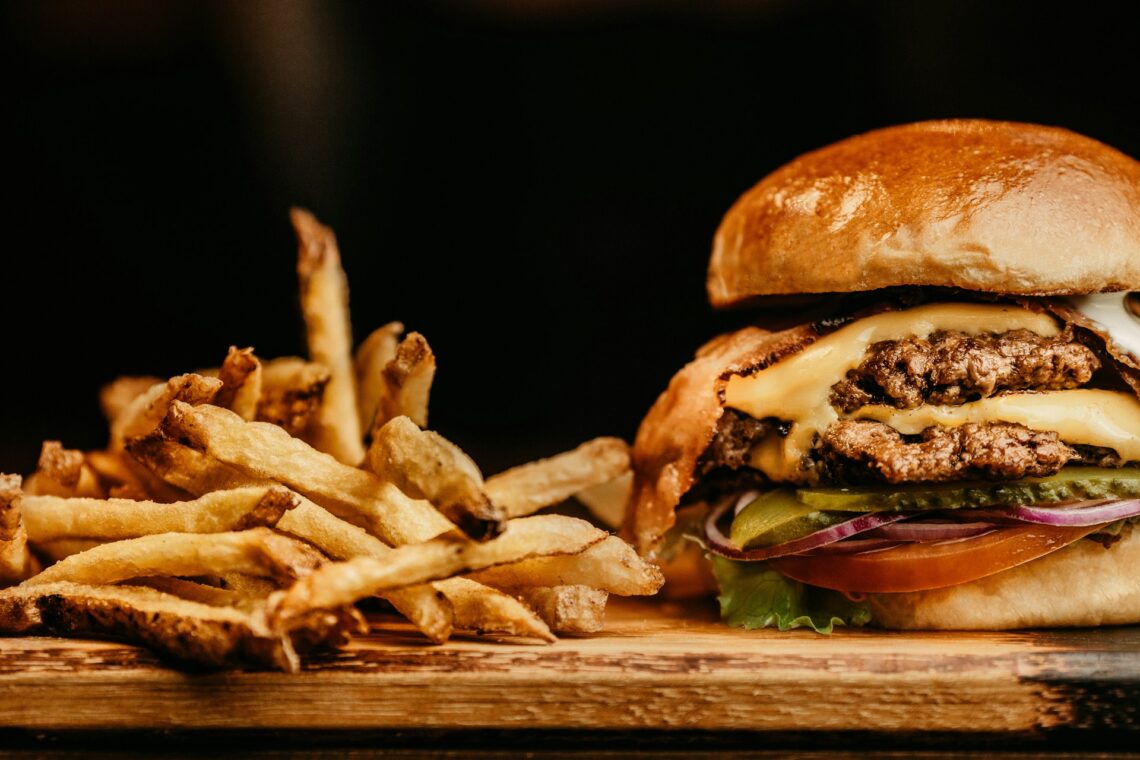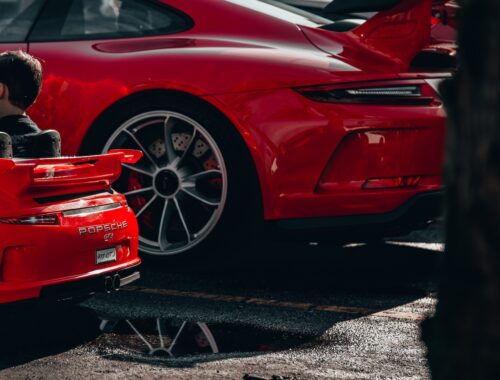
The Fast-Casual Footprint: A Comparative Look at Dining Habits Over the Years
The American dining landscape has undergone a seismic shift over the past few decades, evolving from a simple choice between fast food and sit-down restaurants to a vibrant ecosystem dominated by a compelling new category: fast casual. This segment, expertly bridging the gap between convenience and quality, has not only transformed how we eat but has also subtly reshaped our culinary expectations and daily routines. This article will delve into the evolution of fast-casual dining, tracing its impact on consumer habits over the years, highlighting key players, and examining the enduring appeal.
The Genesis of a Movement: Beyond Fast Food’s Monotony
For decades, the quick-service restaurant (QSR) industry was dominated by the titans of fast food – McDonald’s, Burger King, Wendy’s. Their appeal was undeniable: speed, consistency, and affordability. However, by the late 20th century, a growing segment of consumers began to crave something more. They wanted fresh ingredients, customizable options, and a more elevated dining experience without the time commitment or cost of traditional full-service restaurants. This yearning for a “better burger” or a “healthier fast food” laid the fertile ground for the fast-casual revolution.
The early pioneers of fast casual, often starting as regional successes, recognized this unmet need. They focused on:
- Fresh, often locally sourced ingredients: A stark contrast to the highly processed components of traditional fast food.
- Open kitchens: Transparency in food preparation built trust and showcased quality.
- Customization: Empowering diners to build their meals to their exact preferences.
- Elevated ambiance: Moving away from plastic seating and fluorescent lights to more inviting, often industrial-chic, interiors.
- A slightly higher price point: Justified by superior ingredients and experience.
Early Innovators: Setting the Stage
Several establishments are widely credited with laying the groundwork for the fast-casual phenomenon, long before the term itself became commonplace.
- Subway (founded 1965): While often categorized as fast food, Subway’s emphasis on made-to-order sandwiches with visible fresh ingredients was an early precursor to fast-casual customization. Its “eat fresh” mantra resonated with a health-conscious segment.
- Starbucks (founded 1971): Though primarily a coffee chain, Starbucks demonstrated the power of a “third place” – a comfortable, inviting environment between home and work – and the willingness of consumers to pay a premium for quality and ambiance in a quick-service setting.
- Panera Bread (founded 1987 as St. Louis Bread Company): Panera truly crystallized the fast-casual concept with its focus on fresh bread, soups, salads, and sandwiches. It offered a comfortable, cafe-like atmosphere and a menu that felt wholesome and satisfying, appealing to a demographic seeking a step up from typical lunch options.
- Chipotle Mexican Grill (founded 1993): Often cited as the quintessential fast-casual success story, Chipotle revolutionized the “assembly line” model. Its commitment to “Food with Integrity,” ethically sourced ingredients, and highly customizable burritos and bowls resonated deeply with millennials and a broader audience seeking transparency and quality.
These early successes proved that consumers were willing to pay a little more for a lot more in terms of perceived quality, freshness, and overall experience.
The Rise of the “Better Burger”: Enter Five Guys
Amidst this evolving landscape, the “better burger” segment emerged as a powerful force, directly challenging the dominion of the traditional burger giants. While others like Shake Shack and In-N-Out Burger carved out loyal followings, Five Guys Burgers and Fries exploded onto the national scene with a singular, unwavering focus on simplicity and quality.
Founded in 1986 in Arlington, Virginia, Five Guys initially built its reputation through word-of-mouth for its juicy, customizable burgers and generous portions of fresh-cut, boardwalk-style fries cooked in peanut oil. Their rapid expansion in the 2000s marked a significant shift in dining habits, particularly in regions like Utah, where their presence quickly became a local favorite.
Locations like the American Fork Five Guys, for example, exemplify this impact. They aren’t just places to grab a quick meal; they often become community staples. Diners frequent these spots for:
- Uncompromising Quality: The “never-frozen beef” and “fresh-cut fries” philosophy, prominently displayed, assures customers of the ingredients’ integrity.
- Ultimate Customization: With 15 free toppings, the ability to build a personalized burger is a major draw, catering to individual tastes and dietary preferences.
- The Experience: From the vibrant red and white checkered decor to the complimentary peanuts and visible fry-making process, the Five Guys experience is distinctive and engaging.
- Portion Generosity: The “extra scoop” of fries in the bag has become a legendary and highly appreciated signature.
Five Guys’ success underscored a crucial insight: consumers were willing to pay a premium – often double or triple the cost of a traditional fast-food burger – for a superior product and a more enjoyable experience. This wasn’t just about food; it was about perceived value and indulgence.
Changing Dining Habits: A Societal Reflection
The growth of fast casual, spearheaded by brands like Five Guys, reflects several evolving societal dining habits:
The Demand for Freshness and Transparency:
- Consumers are increasingly concerned about where their food comes from and how it’s prepared. Fast-casual concepts, with their open kitchens and emphasis on fresh ingredients, directly address this.
- This trend has spurred a broader movement towards healthier eating, even within indulgent categories.
The Appeal of Customization and Personalization:
- In an era of personalized everything, food is no exception. The ability to tailor a meal to exact specifications empowers diners and enhances satisfaction.
- This has also been driven by an increase in dietary restrictions and preferences (e.g., vegetarian, gluten-free, low-carb), though Five Guys, with its emphasis on peanuts, also highlights the challenge of balancing customization with allergen awareness.
The “Third Place” Phenomenon (Revisited):
- Fast-casual restaurants often provide a more comfortable and inviting atmosphere than traditional fast food. They serve as convenient meeting spots for casual meals, quick business lunches, or family outings without the formality of a full-service restaurant.
Time-Saving Convenience without Compromise:
- For busy individuals and families, fast casual offers the speed of traditional fast food but with a higher quality product and a more satisfying meal. It’s the ideal solution for those who want good food quickly but are tired of the same old drive-thru options.
The Experience Economy:
- Dining out is increasingly about more than just satisfying hunger; it’s about the entire experience. Fast-casual brands focus on sensory elements – the sizzle, the aroma, the vibrant colors, the welcoming staff – to create memorable moments that encourage repeat visits.
Challenges and Future Directions
Despite its undeniable success, the fast-casual segment faces ongoing challenges and continues to evolve:
- Intense Competition: The very success of fast casual has attracted numerous new entrants, leading to a crowded market.
- Rising Ingredient and Labor Costs: Maintaining the “premium” quality while keeping prices accessible is a constant balancing act.
- Adapting to Digitalization: The proliferation of online ordering, delivery services, and loyalty apps requires significant technological investment and adaptation. Even traditionalists like Five Guys have had to embrace these digital channels to remain competitive.
- Shifting Dietary Trends: The increasing demand for plant-based options, alternative proteins, and diverse global cuisines pushes brands to innovate beyond their core offerings.
The fast-casual footprint on American dining habits is indelible. From the early days of Subway and Panera to the “better burger” era championed by Five Guys and its contemporaries, this segment has continually raised the bar for quick, quality meals. It has taught consumers to expect more from their convenient dining options, fostering a culture where freshness, customization, and an enjoyable experience are paramount. As the industry continues to innovate, the core tenets of fast casual – value, quality, and choice – will undoubtedly continue to shape how and where Americans choose to eat for years to come. The enduring appeal of a perfectly customized burger and a generous serving of fresh-cut fries serves as a delicious testament to this powerful and ongoing culinary evolution.
You May Also Like

How to Choose the Best Shoes for Travel
December 15, 2021
Why Ride On Cars Are the Best Toys to Get Your Kids in 2021
September 7, 2021

